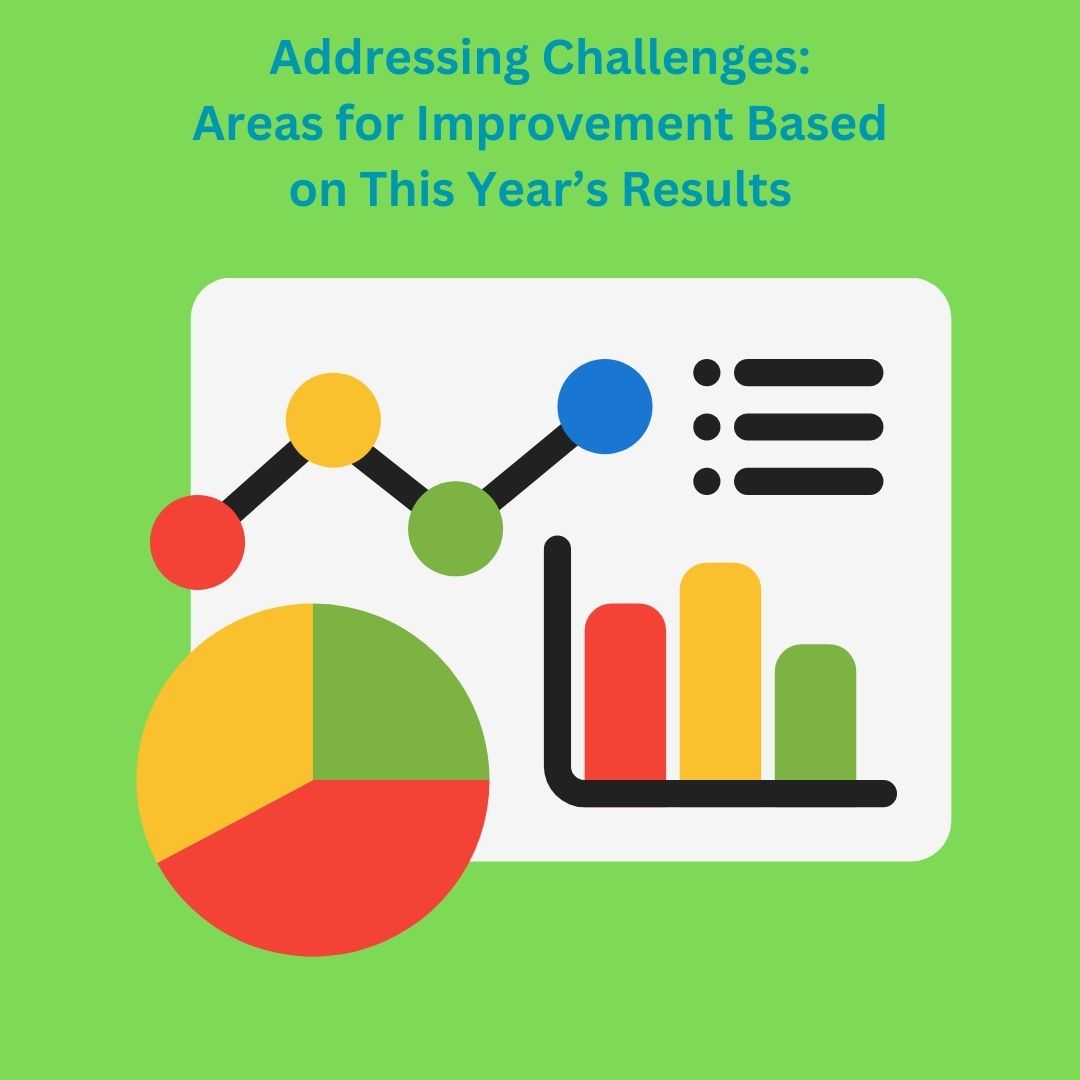Analyzing performance results from the past year provides valuable insights into areas needing improvement. Identifying and addressing these challenges helps organizations, educators, and students enhance their performance and achieve better outcomes. In this blog, we’ll explore the areas for improvement based on this year’s results and provide actionable strategies for overcoming these challenges.
Understanding Key Areas for Improvement
Analyzing Performance Data
The first step in addressing challenges is analyzing performance data to identify key areas for improvement. Review test scores, feedback, and other performance metrics to determine trends and patterns. Focus on areas where results fall short of expectations or where significant declines have occurred.
Understanding the data helps pinpoint specific challenges, whether they relate to academic performance, student engagement, or operational efficiency. Use data-driven insights to guide your improvement efforts and ensure they target the most pressing issues.
Identifying Common Challenges
Based on this year’s results, several common challenges may emerge. These might include declining test scores, gaps in student understanding, or inefficiencies in administrative processes. Identifying these challenges provides a foundation for developing targeted strategies to address them.
For instance, if performance data reveals a drop in math scores, you might need to focus on enhancing math instruction or providing additional resources for students. Identifying common challenges allows you to prioritize areas for improvement effectively.
Strategies for Addressing Performance Challenges
Enhance Instructional Methods
Improving instructional methods can address challenges related to academic performance. Consider incorporating innovative teaching strategies, such as differentiated instruction or project-based learning, to better meet students’ needs. Engaging teaching methods can boost student understanding and performance.
Additionally, providing professional development for educators ensures they are equipped with the latest instructional techniques and resources. Investing in teacher training and development contributes to overall improvement in teaching quality.
Explore more about enhancing instructional methods in our [Effective Strategies for Academic Improvement](link to your blog on effective strategies for academic improvement) blog.
Provide Targeted Support
Offering targeted support is crucial for addressing specific challenges faced by students. This support can include tutoring, mentoring, or additional resources tailored to students’ needs. By identifying areas where students struggle and providing targeted interventions, you can help them overcome obstacles and improve their performance.
For example, if data shows that students are struggling with reading comprehension, implementing reading intervention programs or one-on-one tutoring sessions can provide the necessary support to enhance their skills.
Foster a Growth Mindset
Encouraging a growth mindset helps students and educators approach challenges with a positive attitude. A growth mindset emphasizes that abilities and intelligence can be developed through effort and learning. By fostering this mindset, you can motivate individuals to embrace challenges, persist through difficulties, and continuously strive for improvement.
Promote a growth mindset by celebrating progress, providing constructive feedback, and encouraging perseverance. Learn more about developing a growth mindset in our [How to Develop a Growth Mindset](link to your blog on developing a growth mindset) blog.
Implementing Effective Solutions
Develop an Improvement Plan
Creating a structured improvement plan helps address identified challenges systematically. Outline specific goals, strategies, and timelines for addressing areas needing improvement. Ensure the plan includes measurable objectives and regular checkpoints to monitor progress.
Engage stakeholders, such as educators, students, and parents, in the improvement process to gain support and ensure the plan’s success. An effective improvement plan provides a clear roadmap for achieving better outcomes.
Monitor and Evaluate Progress
Regularly monitoring and evaluating progress is essential for ensuring that improvement strategies are effective. Use performance data and feedback to assess the impact of implemented solutions and make adjustments as needed.
Conduct periodic reviews to track progress towards goals and identify any emerging issues. Continuous evaluation helps ensure that improvement efforts remain on track and achieve the desired results.
Overcoming Resistance to Change
Addressing Concerns and Building Support
Resistance to change can be a challenge when implementing new strategies or improvements. Address concerns by communicating the benefits of proposed changes and involving stakeholders in the decision-making process. Building support through open dialogue and collaboration helps ease the transition and fosters a positive environment for change.
Provide training and resources to support individuals in adapting to new approaches. By addressing concerns and building support, you can overcome resistance and successfully implement improvement initiatives.
Conclusion
Addressing challenges based on this year’s results requires a strategic approach focused on identifying key areas for improvement and implementing effective solutions. By analyzing performance data, enhancing instructional methods, providing targeted support, and fostering a growth mindset, you can overcome obstacles and achieve better outcomes. Developing a structured improvement plan, monitoring progress, and addressing resistance to change contribute to ongoing success and growth.



Leave a Reply